 W
WAdas Israel, located in the Cleveland Park neighborhood, is the largest Conservative synagogue in Washington, D.C. President Ulysses S. Grant attended the dedication of its first building in 1876, the first time a sitting United States President had attended a synagogue service. The original structure is the oldest surviving synagogue building in Washington, D.C., and today the Lillian & Albert Small Jewish Museum.
 W
WAhavas Shalom Reform Temple ) is an historic synagogue building located in Ligonier, Noble County, Indiana at 503 Main Street, built in 1889. It is located in the Ligonier Historic District.
 W
WThe Auschwitz Jewish Center is a non-governmental organization whose mission is to preserve the memory of the Jewish community of the city of Oświęcim and educate about the dangers of anti-Semitism, racism and other prejudices and intolerance.
 W
WB'nai Israel is a Modern Orthodox synagogue located in the historic Jonestown neighborhood, near downtown and the Inner Harbor of Baltimore. The synagogue is one of the oldest synagogue buildings still standing in the United States.
 W
WBayt Dakira or the House of Memory is a Jewish museum located in the Jewish quarter "Mellah" of Essaouira's old medina in Morocco.
 W
WTemple Beth Israel, now known as Cutler-Plotkin Jewish Heritage Center, was the first permanent Jewish congregation in the vicinity of Phoenix, Arizona. The building was designed in 1920 by architects Lescher, Kibbey, and Mahoney in the style of a Spanish mission. Although Jewish houses of worship are usually aligned on an east–west axis, the Temple Beth Israel axis is north–south.
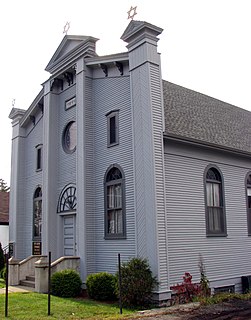 W
WThe Historic Beth Joseph Tupper Lake Synagogue and Gallery is a historic synagogue located in Tupper Lake, Franklin County, New York. It was built in 1906, and is a 2+1⁄2-story, three-bay by five-bay, vernacular Italianate style frame building. It is sheathed in clapboard and has a false front that hides a steep gable roof. The front facade features a "sun dial" arch and rose window, round arched windows, and square corner towers. Also on the property is a contributing 2+1⁄2-story, hip-roofed frame dwelling built between 1906 and 1910. The synagogue was closed for over three decades. Today, it is the oldest synagogue in the Adirondack Mountains, but it is only open in the summer. It houses a small museum.
 W
WThe Heydukova Street Synagogue is the only Jewish synagogue in Bratislava, the capital of Slovakia. It was constructed in 1923 – 1926 on Heydukova Street in the Old Town in Cubist style, designed by the local Jewish architect Artur Szalatnai.
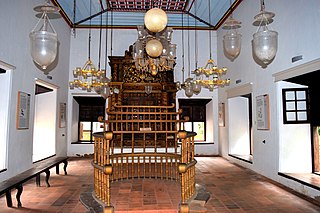 W
WThe Chendamangalam Synagogue is one of the oldest known synagogues built by the Malabar Jews,in Chendamangalam, a village in the Ernakulam district of the coastal state of Kerala. It is dated to 1100 A.D, though the synagogue structure itself dates to 1420 A.D or 1614 A.D., making it the oldest synagogue in the Common Wealth of Nations. A tombstone recovered from Shingly was stored in this synagogue and is presently on display in the courtyard in front. This tombstone with the inscription of Sarah bat Israel is the oldest Jewish relic found in India, dating to 1214 A.D.
 W
WCórdoba Synagogue is a historic edifice in the Jewish Quarter of Córdoba, Spain, built in 1315. The synagogue's small size points to it having possibly been the private synagogue of a wealthy man. It is also possible that Córdoba's complex of buildings was a yeshivah, kollel, or study hall. Another possibility is that this was the synagogue of a trade guild, which converted a residence or one of the work rooms into the synagogue. The synagogue was decorated according to the best Mudejar tradition.
 W
WThe first traces of Jewish settlement in Dolní Kounice are from half of 15th century. First written note comes from 1581. The old synagogue was located on eastern part of the village and was destroyed by Swedish troops during Thirty Years' War, in 1645.
 W
WThe Old Synagogue in Dubrovnik, Croatia is the oldest Sefardic synagogue still in use today in the world and the second oldest synagogue in Europe. It is said to have been established in 1352, but gained legal status in the city in 1408. Owned by the local Jewish community, the main floor still functions as a place of worship for Holy days and special occasions, but is now mainly a city museum which hosts numerous Jewish ritual items and centuries-old artifacts.
 W
WThe Eldridge Street Synagogue is a synagogue and National Historic Landmark in Chinatown, Manhattan, New York City. Built in 1887, it is one of the first synagogues erected in the United States by Eastern European Jews.
 W
WThe Great Synagogue in Bucharest, Romania was raised in 1845 by the Polish-Jewish community.
 W
WThe Great Synagogue of Baghdad, also known as the Shaf ve’Yativ Synagogue, is traditionally believed to stand on the site of a synagogue built by King Jeconiah who was exiled from the Land of Israel to Babylon in 597 BCE. It is said that material gathered from the ruins of the Temple in Jerusalem was used in its construction. The building now serves as a museum in which the synagogue had been rebuilt.
 W
WThe Irish Jewish Museum is a small museum located in the once highly Jewish populated area of Portobello, around the South Circular Road, Dublin 8, dedicated to the history of the Irish Jewish community.
 W
WTemple Israel was erected at 201 West 4th Street in Leadville, Colorado, during the summer of 1884 in less than two months. The Temple Israel building is a rare example of a frontier synagogue.
 W
WThe Jewish History Museum, formerly known as the Jewish Heritage Center of the Southwest, is a museum housed in a historic synagogue building in Tucson, Arizona. The museum's building, which housed the first synagogue in the Arizona Territory, is the oldest synagogue building in the state.
 W
WThe Jewish Museum in Bucharest, Romania is located in the former Templul Unirea Sfântă synagogue, which survived the World War II.
 W
WThe Jewish Museum of Florida-FIU is located in two restored historic buildings that were formerly synagogues, at 301 & 311 Washington Ave., in Miami Beach, Florida. The main museum building, at 301 Washington Ave., was built in 1936, is on the National Register of Historic Places, has Art Deco features, a copper dome, a marble bimah and 80 stained glass windows. The adjacent building located at 311 Washington, which served as Miami Beach's first synagogue, was purchased by the museum in 2005 and restored in 2007 as a museum expansion.
 W
WJewish Museum of Turkey is a cultural center established by the Quincentennial Foundation to inform the society of the traditions and history of Turkish Jewry. It was inaugurated on November 25, 2001. The Quincentennial Foundation was established in 1989 by 113 Turkish citizens, Jews and Muslims alike, to celebrate the five hundredth anniversary of the arrival of Sephardim to the Ottoman Empire. The idea of a museum was proposed by Naim Güleryüz who is now its curator and the foundation was financed by the prominent Jewish Kamhi family.
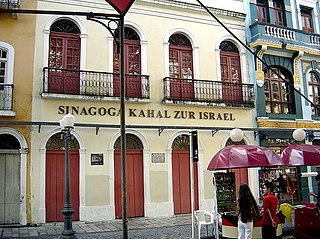 W
WKahal Zur Israel was a Jewish synagogue located at Rua do Bom Jesus number 197 in Recife, Brazil. It was established in 1636 by Portuguese and Spanish Sephardic Jews that had taken refuge in the Netherlands fleeing forced conversion and were joined by New Christians, who possibly helped to build the structure and were already living in the colony. It was the first synagogue erected in the Americas. The building is now a museum, including a Torah and bema as well as archeological excavations displaying various parts of the original synagogue, such as the mikveh.
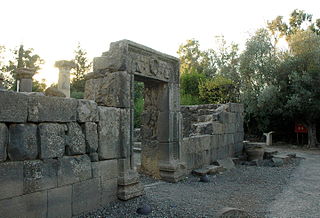 W
WThe Katzrin ancient village and synagogue is an open-air museum located in the Golan Heights on the outskirts of the Israeli settlement of Katzrin. It features the partially reconstructed remains of a village from the 4th-8th century CE, that is: mainly from the Byzantine period, but starting from the Late Roman and extending into the Early Muslim era, or in Jewish terms from the Talmudic period.
 W
WThe Klausen Synagogue is nowadays the largest synagogue in the former Prague Jewish ghetto and the sole example of an early Baroque synagogue in the ghetto. Today the synagogue is administered by the Jewish Museum in Prague.
 W
WThe Łańcut Synagogue is a Baroque synagogue in Łańcut, Poland. The Łańcut Synagogue is a rare surviving example of the vaulted synagogues with a bimah-tower, that were built throughout the Polish lands in masonry from the sixteenth through the early nineteenth centuries.
 W
WLendava Synagogue is a former synagogue, currently a museum. It is located in the small town of Lendava, Slovenia, close to the Hungarian border. It was built in the 18th century and today has a permanent exhibition on the History of Jews in Lendava. Near the synagogue was a Jewish school, which functioned until the 1920s and was demolished in the end of the 1990s to allow the construction of a Hungarian cultural centre and a cemetery with 176 tombstones, about 40 from the second half of the 19th century, most of the rest from the 20th century near the village of Dolga Vas, just outside town.
 W
WAhavas Shalom Reform Temple ) is an historic synagogue building located in Ligonier, Noble County, Indiana at 503 Main Street, built in 1889. It is located in the Ligonier Historic District.
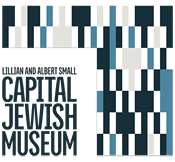 W
WThe Capital Jewish Museum, officially the Lillian & Albert Small Capital Jewish Museum, is a historical society and its planned museum in Washington, D.C., focused on the history of Jewish life in the American capital city and the surrounding Washington metropolitan area.
 W
WThe Little Synagogue on the Prairie is a small, wooden synagogue originally built in Sibbald, Alberta, just west of the Alberta-Saskatchewan border. Originally called the Montefiore Institute, it was built in 1913 or 1916 by the Montefiore colony of Jewish immigrants who had settled in Alberta in 1910, named after Sir Moses Montefiore. It is one of the few surviving examples of the small, wooden synagogues that were built by pioneers on the Canadian and American prairie.
 W
WThe Lloyd Street Synagogue is an 1845 Greek Revival style synagogue building in Baltimore, Maryland. One of the oldest synagogues in the United States, Lloyd Street was the first synagogue building erected in Maryland and is the third oldest synagogue building still standing in the United States. Lloyd Street is now owned by the Jewish Museum of Maryland and is open to the public as a museum in the Inner Harbor area of Baltimore. It is listed on the National Register of Historic Places.
 W
WMaisel Synagogue is one of the historical monuments of the former Prague Jewish quarter. It was built at the end of the 16th century which is considered to be the golden age of the ghetto. Since then its appearance has changed several times, its actual style is neo-gothic. Nowadays the synagogue belongs to the Jewish Community of Prague and is administered by the Jewish Museum in Prague as a part of its expositions.
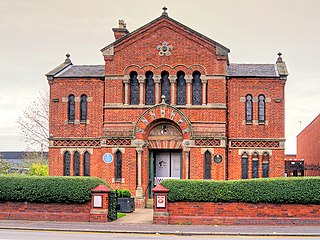 W
WManchester Jewish Museum occupies the former Spanish and Portuguese synagogue on Cheetham Hill Road in Manchester, England. It is a grade II* listed building.
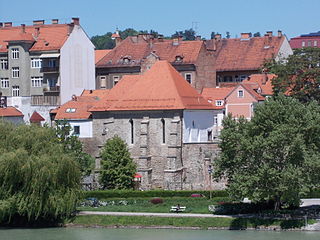 W
WMaribor Synagogue is a former synagogue and current museum in the city of Maribor, Slovenia. Located in what was the center of the medieval Maribor ghetto Židovska ulica, it is one of the oldest preserved synagogues in Europe, and one of only two left in Slovenia; the other being the Lendava Synagogue. It once functioned as the centre of the medieval Jewish community in Maribor, among the most prominent in the Eastern Alps-area.
 W
WThe Nitra Synagogue is a historical building in Nitra, Slovakia.
 W
WThe Northern Transylvania Holocaust Memorial Museum is located in Șimleu Silvaniei, Sălaj County, Romania, and was opened September 11, 2005. The museum is operated and maintained by the Jewish Architectural Heritage Foundation of New York and Asociația Memoraliă Hebraică Nușfalău, with the support of the Claims Conference, Elie Wiesel National Institute for Studying the Holocaust in Romania, among other philanthropic and pedagogical partners.
 W
WThe Alte Synagoge in Erfurt, Germany, is one of the best preserved medieval synagogues in Europe, its oldest parts dating back to the late 11th century. Most parts of the building date from around 1250–1320. It is thought to be the oldest synagogue building intact to its roof still standing in Europe.
 W
WThe Oświęcim Synagogue, also called the Auschwitz Synagogue, is the only active synagogue in the town of Oświęcim, Poland. The formal, as well as pre-war, name of the synagogue is Khevre Loymdei Mishnayos. It is now part of the Auschwitz Jewish Center, which includes a Jewish Museum, a cafe in the house of Shimson Kleuger and an education center.
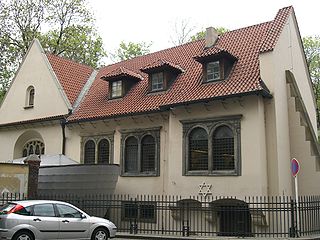 W
WThe Pinkas Synagogue is the second oldest surviving synagogue in Prague. Its origins are connected with the Horowitz family, a renowned Jewish family in Prague. Today, the synagogue is administered by the Jewish Museum in Prague and commemorates about 78,000 Czech Jewish victims of the Shoah.
 W
WThe Shanghai Jewish Refugees Museum is a museum commemorating the Jewish refugees who lived in Shanghai during World War II after fleeing Europe to escape the Holocaust. It is located at the former Ohel Moshe or Moishe Synagogue, in the Tilanqiao Historic Area of Hongkou district, Shanghai, China. The museum features documents, photographs, films, and personal items documenting the lives of some of the more than 20,000 Jewish residents of the Restricted Sector for Stateless Refugees, better known as the Shanghai Ghetto, during the Japanese occupation of Shanghai.
 W
WThe Simon Attias Synagogue is a nineteenth-century synagogue in Essaouira, Morocco, formerly known as Mogador, Morocco. It is also known as the Bet Ha-Knesset Simon Attias, M'sod Attias and Shaarei T'filah. The synagogue was built in 1882.
 W
WThe Smíchov Synagogue is the only functionalist synagogue in Prague; it was reconstructed to this style in 1931. After the World War II, the building was used for secular purposes because the Smíchov Jewish community ceased to exist in the Shoah. In the present, the building is used for an archive of the Jewish Museum in Prague.
 W
WThe Spanish Synagogue is the newest synagogue in the area of the so-called Jewish Town, yet paradoxically, it was built at the place of the presumably oldest synagogue, Old School. The synagogue is built in Moorish Revival Style. Only a little park with a modern statue of famous Prague writer Franz Kafka lies between it and the church of Holy Spirit. Today, the Spanish Synagogue is administered by the Jewish Museum in Prague.
 W
WThe Synagogue of Castelo de Vide is a well-preserved medieval synagogue in Santa Maria da Devesa, Castelo de Vide, Portugal. Along with the Synagogue of Tomar, it is one of two existing pre-expulsion synagogues in the country. Built in the late 14th century, it now houses a museum dedicated to Castelo de Vide's historical Jewish community.
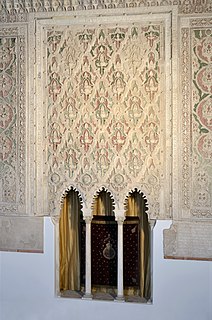 W
WThe Synagogue of El Tránsito, also known as the Synagogue of Samuel ha-Levi or Halevi, is a historic synagogue, church, and Sephardic museum in Toledo, Spain. It was built as an annex of the palace of Samuel ha-Levi Abulafia, treasurer to King Peter of Castile, in 1357. The synagogue was converted into a church after the expulsion of the Jews from Spain in 1492. It was briefly used as military barracks during the Napoleonic Wars of the early 1800s. It became a museum in 1910. Today it is formally known as the Sephardi Museum. The building is known for its rich stucco decoration, its Mudejar style, and its women's gallery.
 W
WThe Synagogue of Tomar is a well-preserved medieval synagogue in Tomar, Portugal. Along with the Synagogue of Castelo de Vide, it is one of two existing pre-expulsion synagogues in the country. It is located at 73 Rua Dr. Joaquim Jaquinto in Tomar's historic city center. Built in the mid-1400s, the building was active as a synagogue only until 1496, when Jews were expelled from Portugal. It now houses the Abraham Zacuto Portuguese Jewish Museum.
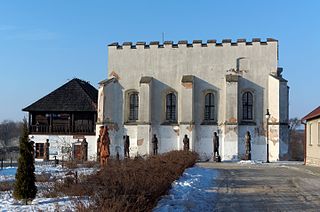 W
WSzydłów Synagogue was an Orthodox Judaism synagogue in Szydłów, Poland. It was built in 1534–1564 as a fortress synagogue with heavy buttresses on all sides. The synagogue was devastated by Nazis during World War II. During the war it served as a weapons and food magazine. After the war, it briefly served as a village cinema, but was eventually abandoned.
 W
WThe Touro Synagogue or Congregation Jeshuat Israel is a synagogue built in 1763 in Newport, Rhode Island. It is the oldest synagogue building still standing in the United States, the only surviving synagogue building in the U.S. dating to the colonial era, and the oldest surviving Jewish synagogue building in North America. In 1946, it was declared a National Historic Site.
 W
WThe Tykocin Synagogue is a historic synagogue building in Tykocin, Poland. The synagogue, in mannerist-early Baroque style, was built in 1642.
 W
WThe Resistance Museum is a museum located in the Plantage neighbourhood in Amsterdam, the Netherlands. The Dutch Resistance Museum, chosen as the best historical museum of the Netherlands, tells the story of the Dutch people in World War II. From 14 May 1940 to 5 May 1945, the Netherlands were occupied by Nazi Germany.
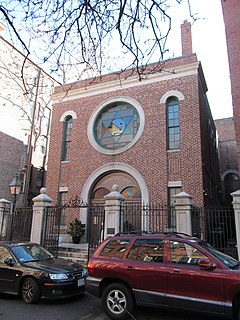 W
WThe Vilna Shul is now a historic landmark building housing a cultural center, community center, and living museum. It was a synagogue and was built for an Orthodox congregation in 1919 by immigrants primarily from Vilna, Lithuania. The building stands on what is known as the back side or north slope of Beacon Hill in Boston, Massachusetts.
 W
WThe White Stork Synagogue is a nineteenth-century synagogue in Wrocław, Poland. Rededicated in 2010 after a decade-long renovation, it is the religious and cultural centre of the local Jewish community, under the auspices of the Union of Jewish Religious Communities in Poland. It is the only synagogue in Wrocław to have survived the Holocaust.
 W
WThe Włodawa Synagogue in Włodawa, Poland is an architectural complex consisting of two historic synagogues and a Jewish administrative building, now preserved as a museum. The complex includes the Włodawa Great Synagogue of 1764–74, the late 18th century Small Synagogue, and the 1928 community building. It is "one of the best-preserved" synagogues in Poland.
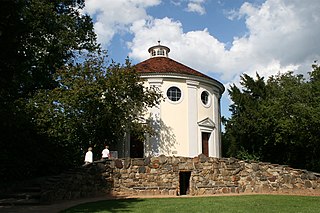 W
WThe Wörlitz Synagogue is a synagogue built in 1790 by order of Duke Leopold III of Anhalt-Dessau. It is located within the Dessau-Wörlitz Garden Realm, a UNESCO World Heritage Site since 2000.